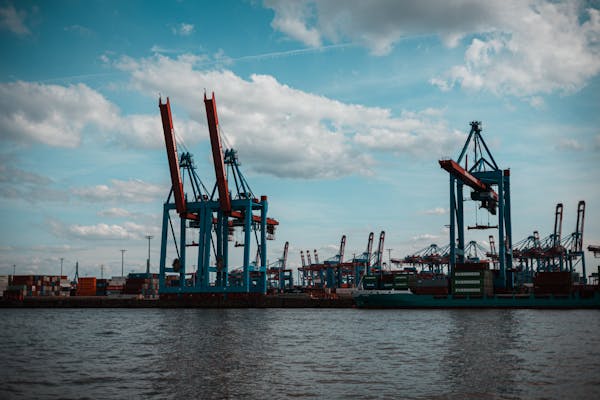Shipping Shoe Baskets from Guangzhou/Shenzhen to São Paulo Port, Brazil: 20FT/40FT FCL & LCL Options
1. FCL (Full Container Load) Shipping
For large shipments, Full Container Load (FCL) is a popular choice. This method involves using an entire shipping container, which can be a 20-foot container (20FT) or a 40-foot container (40FT) depending on the size and volume of your goods. With FCL, your cargo will not be mixed with goods from other shippers, which means fewer handling risks and often faster transit times.
- Transit Time: The average sea freight journey from Guangzhou/Shenzhen to São Paulo Port is approximately 30 days.
- CIF (Cost, Insurance, and Freight): This is a shipping term that includes the cost of the goods, insurance, and freight to the destination port. For this option, the seller assumes responsibility for costs and risks up to the port of São Paulo. After arrival, you, the buyer, will take responsibility for customs clearance and delivery to the final destination.
Packaging for FCL
For FCL shipments, it’s essential to ensure that your shoe baskets are packaged securely to avoid damage during transit. The packaging process includes:
- Carton Packaging: Each shoe basket is packed into strong cardboard cartons to protect it from moisture, dirt, and physical damage.
- Palletizing: Cartons are often arranged on wooden pallets, ensuring stability and making it easier to load and unload the containers. Palletizing also helps avoid the risk of damage from rough handling during loading and unloading.
- Shrink Wrap: To provide an additional layer of protection, the cartons are sometimes wrapped in shrink film, securing the goods to the pallet.
- Labeling: Each package should be clearly labeled with information such as the consignee’s name, destination port (São Paulo), and handling instructions.

2. LCL (Less than Container Load) Shipping
If you do not have enough goods to fill an entire container, Less than Container Load (LCL) is a more economical solution. With LCL, your shipment will share a container with other cargo, and you will only pay for the space you use. This method is ideal for smaller shipments but may require more time for consolidation and deconsolidation.
- Transit Time: The shipping time for LCL is generally similar to FCL, taking approximately 30 days. However, LCL may involve additional handling time at both the origin and destination due to the need for consolidation and deconsolidation of cargo.
- CIF (Cost, Insurance, and Freight): As with FCL, CIF shipping for LCL also includes the cost of goods, insurance, and freight to São Paulo Port.
Packaging for LCL
In LCL shipments, since your goods will be packed together with other items in a shared container, extra care must be taken with packaging to prevent damage to other shipments:
- Carton Boxes: Each shoe basket should be individually packed in durable cardboard boxes. Boxes should be of appropriate size to prevent movement inside the container.
- Inner Packaging: In some cases, it may be advisable to use bubble wrap or foam padding inside the boxes to add an extra layer of protection.
- Shrink Wrap & Pallets: Even for LCL shipments, some shippers opt to palletize the goods for easier handling and added security, especially if the cargo is fragile.
- Labeling: As with FCL, each carton or pallet should be clearly labeled with shipment details, including the consignee’s information and destination.

Customs Clearance and Delivery
Once the goods arrive at São Paulo Port, they must go through the Brazilian customs clearance process. This involves the submission of required documents, such as the commercial invoice, packing list, and bill of lading. Customs duties and taxes will need to be paid before the goods can be released for delivery.
For CIF shipments, the seller is responsible for costs and risks up to São Paulo Port, but after the cargo clears customs, the buyer will need to arrange for the inland transportation to their final destination within Brazil, including São Paulo city or nearby regions.



